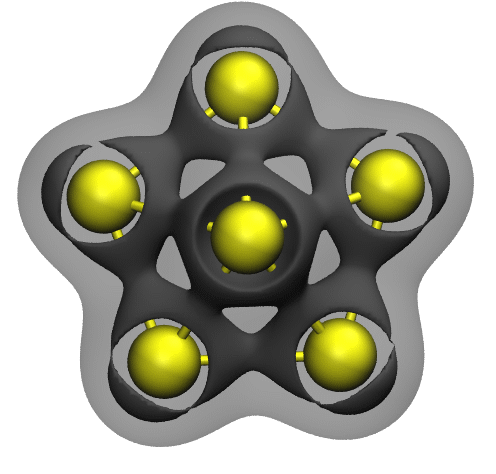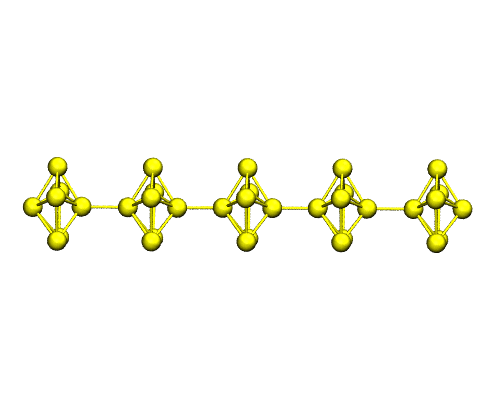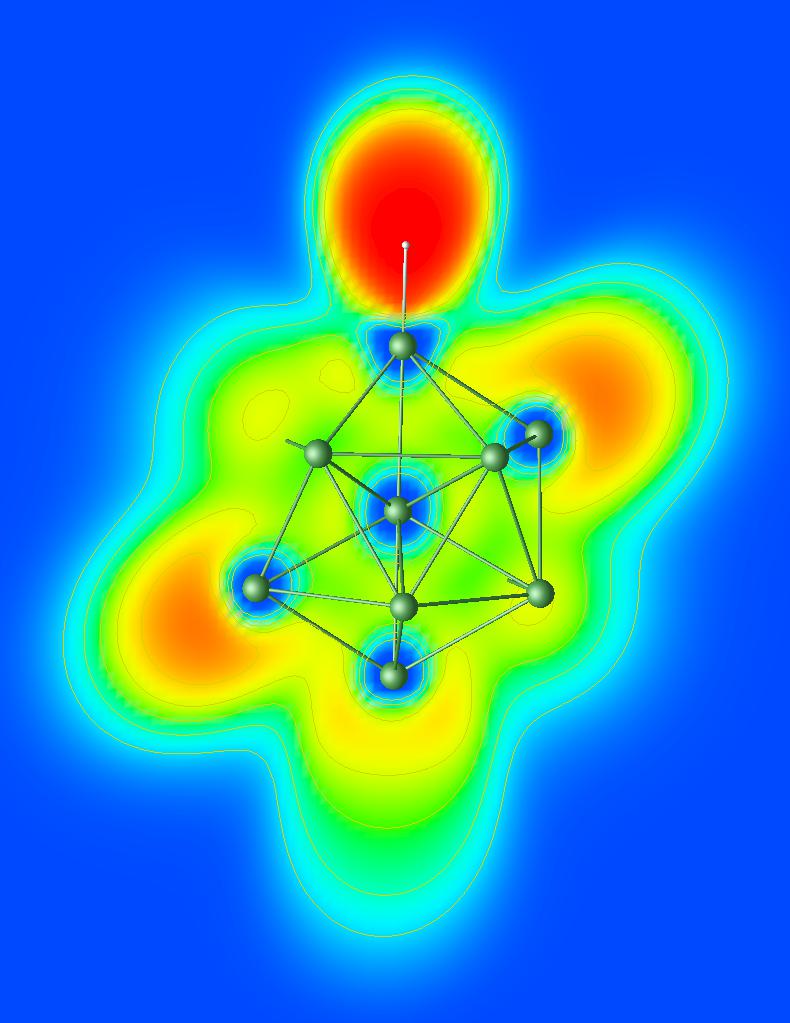
The areas of iso electron-densities show that not all pairs of atoms are bonded covalently [b4].
Experimental results show that Si4, S7 and Si10 cluster are possible candidates for new materials. The question if a Sin cluster is a possible candidate for a new material was adressed by calculating the binding energies of two clusters as function of the displacement. The DFT simulations were done with the open source program package CPMD.
The studies found the Si7 cluster to be the most promising candidate for that purpose.

The effect of an external electrical field onto the properties of magic cluster was studied in the diploma thesis of M. Schach (Si4) and M. Beck (Si7).
As result, it could be shown that the external field could be used to induce a fusion barrier. This could be a usefull tool to structure devices in future experiments.

An H atom has many possibilities to suspend on a Al13 culster, e.g. atop an Al atom, atop the line between two or atop the surface spanned up by three neighboring atoms. In the diploma thesis of M. Matt it was investigated whether or not an external magnetic field could be used to move the H atom from one (semi) stable position to another. The DFT simulations were done with the open source program package Octopus.
The results showed that it would be at least theoretically possible (at least within the approximations used in the code). But the magnetic fields which would be needed are in a similar order as can be found only in (extra-) galactic systems like neutron stars.
b) Old publications
- C. Schieback, F. Bürzle, K. Franzrahe, J. Neder, M. Dreher, P. Henseler, D. Mutter, N. Schwierz, P. Nielaba, in: High Performance Computing in Science and Engineering '08, edited by W.E. Nagel, D. Kröner, M.M. Resch, Springer Verlag, pp. 41 (2009).
- M. Grass, D. Fischer, M. Mathes, G. Ganteför, P. Nielaba, Appl. Phys. Lett. 81, 3810 (2002).
- M. Dreher et al., Phase Transitions 78, 751 (2005).
- F. von Gynz-Rekowski, W. Quester, R. Dietsche, Dong Chan Lim, N. Bertram, T. Fischer, G. Ganteför, M. Schach, P. Nielaba, Y.D. Kim, Eur. Phys. J. D45, 409 (2007).
c) Completed work
- D. Fischer, Doktorarbeit, U. Konstanz (2002).
- W. Quester, Doktorarbeit, U. Konstanz (2008).
- M. Schach, Diplomarbeit, U. Konstanz (2007).
- M. Beck, Diplomarbeit, U. Konstanz (2011).
- M. Matt, Diplomarbeit, U. Konstanz (2011).
d) Reference
e) External links (programs, potentials ...)
- CPMD. Copyright IBM Corp 1990-2001, Copyright MPI für Festköperforschung Stuttgart 1997-2004. (http: //www.cpmd.org/)
- Octopus (http://octopus-code.org/wiki/Main_Page/)
f) Books
D. Marx and J. Hutter, Ab initio molecular dynamics : basic theory and advanced methods (Cambridge University Press, 2010)
